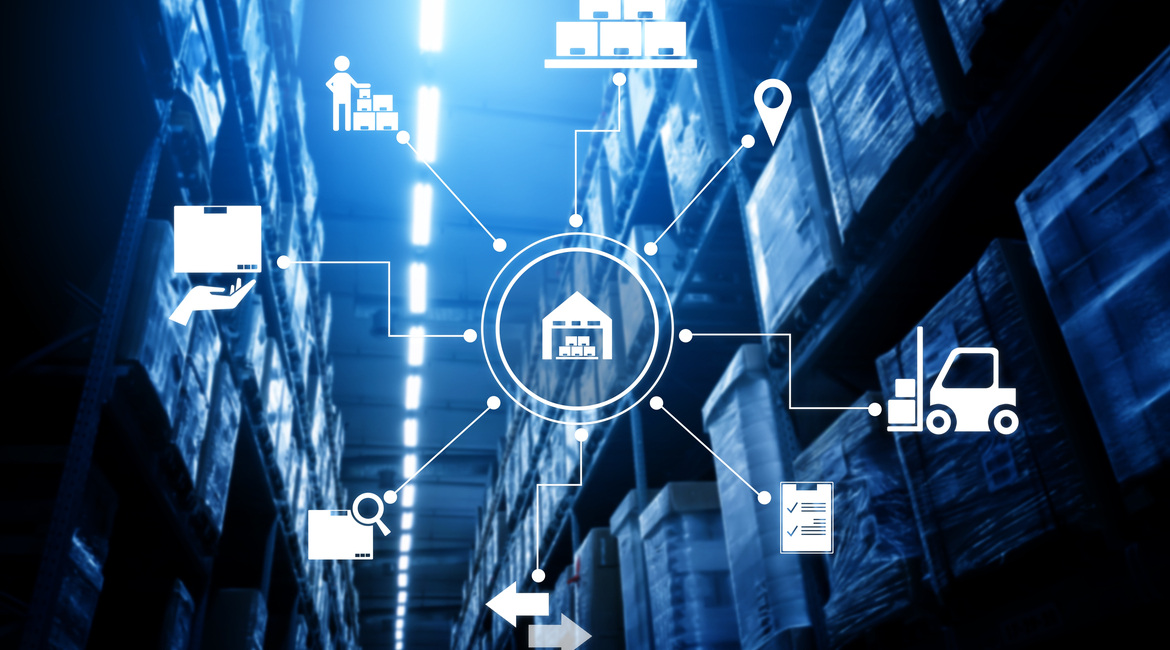Smart warehouse: how to choose the right IoT and RTLS partner

For many, terms such as “logistics” and “warehouse” evoke images connected to transport and more or less structured areas meant for storage of materials and products. For those who administrate and have specific management responsibilities in this industry, however, there is a much more complex world to explore. A reality characterized by high competition standards, requiring market players to offer increasingly personalized products, at reduced prices and delivery times.
Smart warehouse: AI, evolution and scenario
It’s easy to understand why industries, for some years now, have paid special attention to warehouse problems and are investing in order to increase efficiency through automation. It suffices to think that the overall volume of investment in this technology will reach $ 27 billion by 2025. In addition: logistics companies, following the pandemic experience, expect increasing investments for the resilience of the logistics system (62%), the digitization of processes (50%) and data-driven decision systems (15%).
It should also be taken into account that the management of material flows is at risk of becoming inefficient and uncompetitive if companies do not know how to take advantage of the latest technologies: through the implementation of Artificial intelligence (AI), it’s possible to grow in flexibility, an indispensable factor to meet the rising expectations and demands of consumers.
Gartner as well notes a growing interest in this evolution of AI and argues that by 2025, generative artificial intelligence will represent the 10% of all data produced (compared to only 1% represented today). McKinsey embraces this evidence too, which estimates an annual economic value of the Internet of Things between 14 and 33 trillion dollars by 2025.
Macroeconomic data of the global market of AI applications in this sector show a strong growth trend: if in 2018 this market was valued about 1.7 billion dollars, in 2027 it is expected to reach 12 billion. Hyper-automation, connection and constant data entry, consequently, are requirements that the industry of the future must possess.
Warehouse management and goals
In a rapidly changing scenario of technologies, the main goals pursued by warehouse managers consist of:
- speeding up transit inside the warehouse (rotation);
- allowing the maximum flexibility in response to both market and production needs;
- rationalizing spaces;
- allowing product traceability;
- minimizing (or eliminating) unproductive activities;
- reducing costs in material handling and storage operations.
Depending on the situation, various levels of automation and ‘intelligence’ delegate to multiple technologies can be adopted. The search for the ideal solution however requires a number of systemic activities, that must take into account the several elements useful to ensure an optimal performance of the warehouse itself in a perspective of integration. In particular, it is good to draw attention to at least three critical elements:
- the organizational / logistics element;
- the informative / IT element;
- the system / technological element.
How to choose the right IoT and RTLS partner
Once analyzed the main goals pursued by warehouse managers, it’s time to comprehend the potential pluses or the main contributions that this ‘additional intelligence’ can provide compared to a classic automatic warehouse. Above all, what it’s in need of further analysis involves the requirements and skills that an ideal partner should have to be able to guide the company to the implementation of artificial intelligence, especially when it comes to IoT (Internet of Things) and RTLS (Real-Time Locating Systems).
The search for a continuous innovation, meant to lead not only to new products, but to the improvement of those already in use by customers, is one of the fundamental requirements for a technology partner. A form of innovation that must be able to respond to the needs of companies. Most of all, the need for flexibility also in terms of possible layouts of the warehouse areas. The latter, too, must in fact be able to be adapted, easily and in a short time, to respond to the changes in demand and production peaks.
A continuous innovation for even more flexible and efficient automation
IoT and RTLS solutions can meet this need and allow to reconfigure the management of vehicles, tasks and production and storage areas in real time. At the same time, the need to contain costs pushes companies to look for partners able to offer technological solutions equipped with these features in consideration of the reduction of necessary hardware use.
Hardware technologies must in fact allow to implement – already at machinery level – automatic responses of the vehicle to certain situations, in order to meet the needs of efficiency and immediacy of the warehouse. For example, the most innovative RTLS systems allow to set automatic responses of the vehicle in situations of danger directly from the interface equipped on board the vehicle, opposite to software options. Innovations are a result of the sensitivity of the best technological partners, able to understand the difficulties that companies face in implementing a digitization project.
A partner for smart logistics of all production and storage areas
Flexibility is also expressed through the level of technologies and solutions offered by a partner. Each area of the warehouse – from the storage areas of the goods to the loading and unloading yards has its own critical issues and needs. The same can be said of the various processes and actors involved in the supply chain: the management of goods within the warehouse requires different technologies (starting from those used for georeferencing) compared to those necessary for tracking the goods in delivery. The accuracy of the detection, the frequency of data transmission and the type of data to be detected vary depending on applications and spaces of use.
The right partner for smart logistics must be able to offer innovative solutions suitable, and adaptable, to each area, that can be integrated with pre-existing industry infrastructures to limit implementation times and costs.
